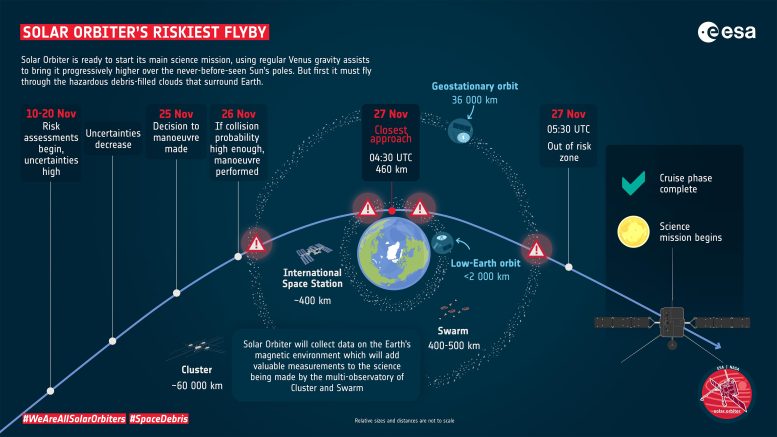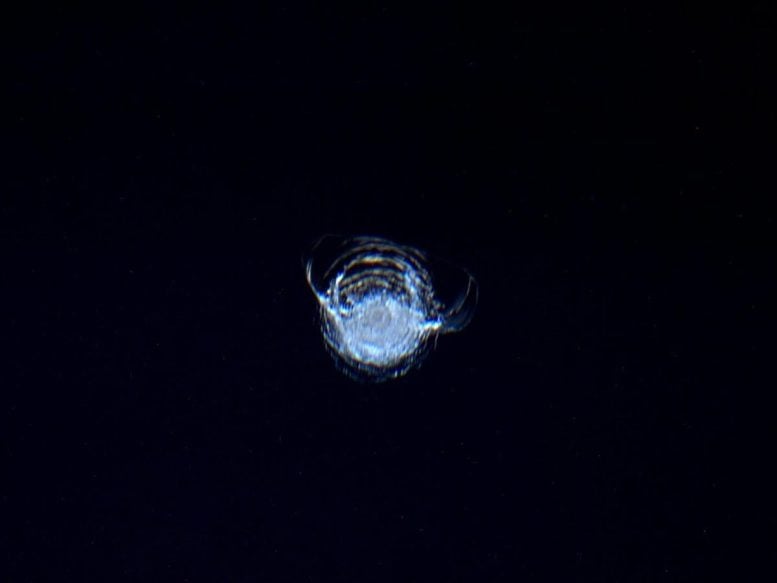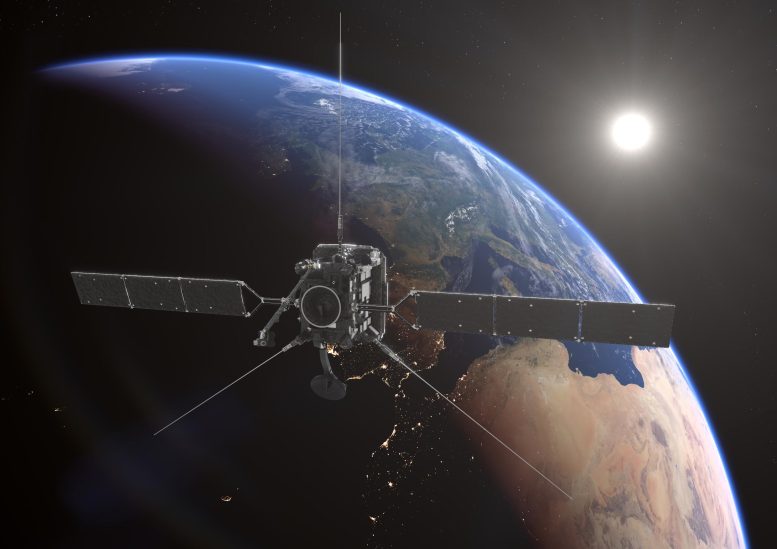ESA’s Solar Orbiter Spacecraft Is Skimming Earth for a Gravity Assist – And It’s
The chance that ESA’s Solar Orbiter spacecraft will encounter space debris during its upcoming Earth flyby is very, very low. However, the risk is not zero and is greater than any other flyby ESA has performed. That there is this risk at all highlights the mess we’ve made of space – and why we need to take action to clean up after ourselves.
On November 27, after a year and eight months flying through the inner Solar System, Solar Orbiter will swing by home to ‘drop off’ some extra energy. This will line the spacecraft up for its next six flybys of gravity assists will hone and tilt Solar Orbiter’s orbit, enabling the heat-protected probe to capture the first-ever direct images of our star’s poles, and much more.

During the upcoming flyby, Solar Orbiter is estimated to pass just 460 km from Earth’s surface at its closest approach – about 30 kilometers above the path of the International Space Station. It will travel twice through the Geostationary ring at 36 000 kilometers from Earth’s surface and even through low-Earth orbit, below 2000 kilometers – two regions littered with space junk. Credit: ESA
How risky? It’s all relative
Before we worry too much, let’s start by pointing out that the chance of Solar Orbiter being struck by debris is very, very, very small. Earth observation missions spend their entire life in low-Earth orbit – the most debris-filled region of space, and while they perform ‘collision avoidance maneuvers’ a few times per year, Solar Orbiter will spend only a few minutes here as it heads towards closest approach and then leaves again, onward to Venus.

ESA astronaut Tim Peake took this photo from inside Cupola on the International Space Station, showing a 7 mm-diameter circular chip gouged out by the impact from a tiny piece of space debris, possibly a paint flake or small metal fragment no bigger than a few thousandths of a millimeter across. The background just shows the inky blackness of space. Credit: ESA/NASA
However small the risk, collisions with debris at low-Earth altitudes do happen. In 2016, a solar panel on ESA’s Sentinel-1A spacecraft was struck by a particle thought to be less than five millimeters in size. Despite its size, its high relative speed meant it still damaged an area 40-cm across, leading to a small reduction in onboard power and slight changes to the orientation and orbit of the satellite. Hundreds of millions of debris particles this size are currently in orbit.
Hubble, the ESA’s Solar Orbiter Spacecraft Is Skimming Earth for a Gravity Assist – And It’s

